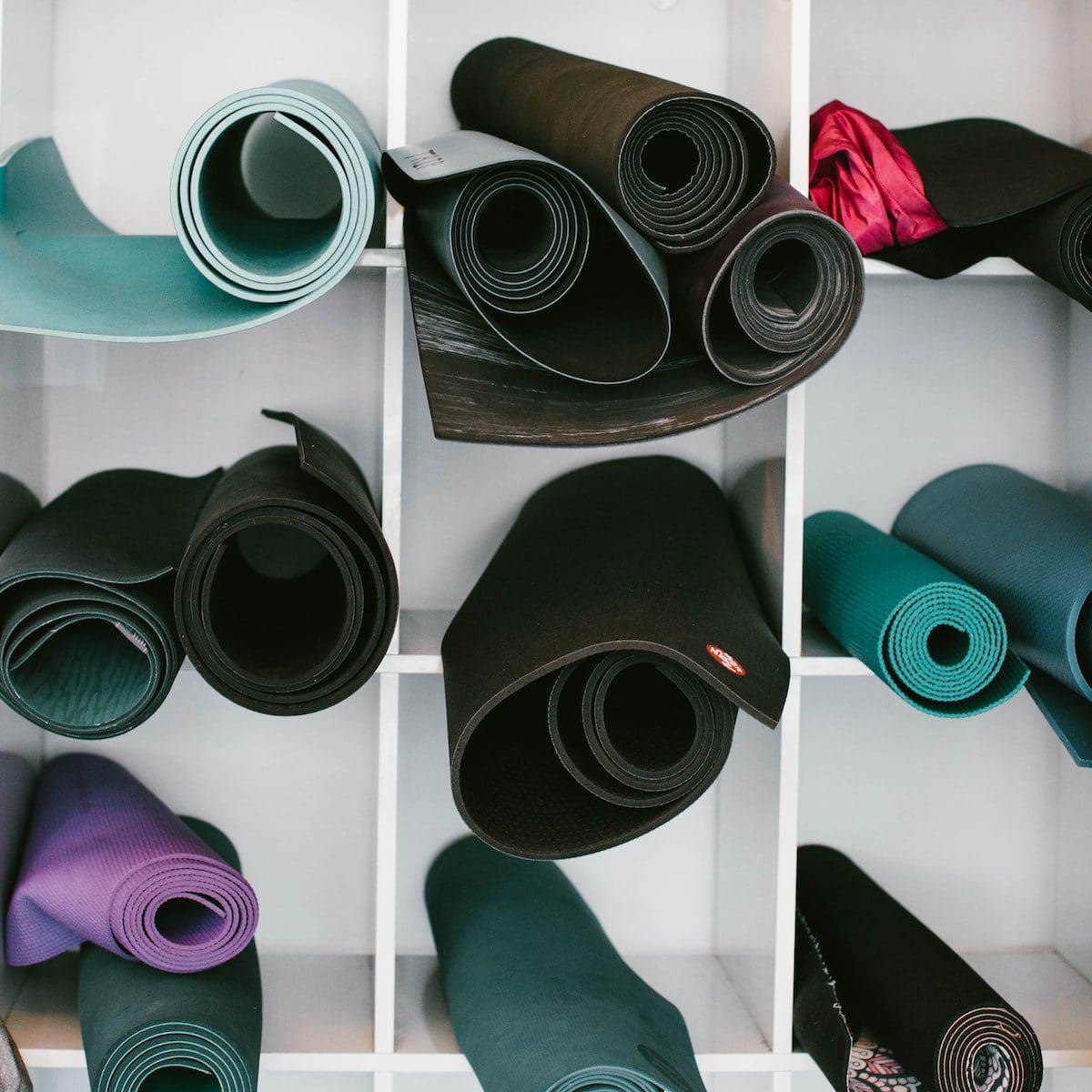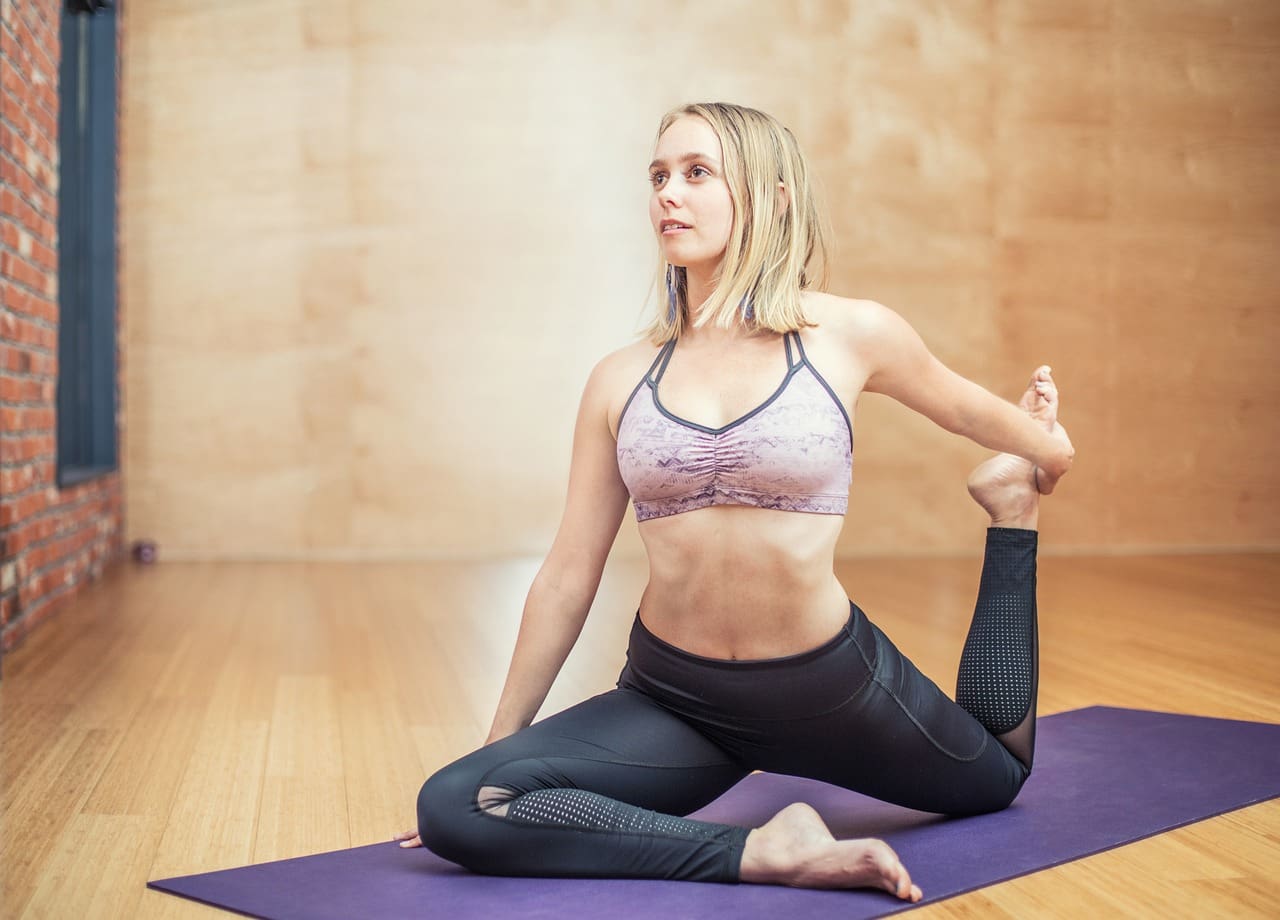Yoga mat and Pilates mat are used for practicing yoga and Pilates on respectively.
While yoga is used for increasing flexibility and soothing the mind, Pilates is mainly practiced to relax tensed muscles and help create a connection with the mind.
The mats used for both are different as the mat exercises differ to a certain extent in both.
Key Takeaways
- Yoga mats are thinner and provide more traction for stability, while Pilates mats are thicker and offer more cushioning for comfort.
- Pilates mats are better suited for floor exercises, whereas yoga mats cater to various standing and balancing poses.
- Yoga mats are made of PVC, rubber, or eco-friendly materials, while Pilates mats use closed-cell foam or TPE.
Yoga Mat vs Pilates Mat
A yoga mat is thinner and provides more traction and grip for practising yoga. Pilates mat is thicker and offers more cushioning and support for Pilates exercises, which involve rolling and stretching movements. Yoga mats are nonslip, while pilates mats are well cushioned.

Yoga mats are very thin when out besides many other exercise mats. This is to aid the users while exercising and practicing acts such as body balancing and breath regulation.
For almost all yoga practices, the enthusiasts need not lie down and sit for long hours. This makes it comfortable to use a thin yoga mat.
Pilates mats are always thick and are at least a quarter of an inch thicker than most other floor mats that are used for other similar mind and body exercises.
This thickness in the mat is to provide proper cushioning to the user while they do pilates mat exercises which involve laying down on the back and straining the backbone.
Comparison Table
| Parameters of Comparison | Yoga Mat | Pilates Mat |
|---|---|---|
| Thickness | Less thick | Really thick |
| Larger Size | No | Yes |
| Eco-Friendly Materials | Yes, like jute and rubber | No |
| Density | Low | High |
| Coarseness | Greater | Less |
What is Yoga Mat?
Yoga mats are used to perform and practice yoga which helps in creating a connection with the mind and body. Most exercises that are practiced under yoga require the person to stand upright or perform without lying down completely.
Such characteristics lead to the fact that the mats that are manufactured for yoga practices be made out thin.
The maximum thickness to be expected from a yoga mat is a quarter of an inch and the starting thickness in terms of an inch is 1/8th of an inch.
Such small figures make it easier for a viewer to realize that the mats used for yoga are thin. But that doesn’t mean that the mat hinders the movement of the users nor does it make them uncomfortable while doing mat yoga.
While sitting down on the mat for long might create a muscle cramp in the lower body but other than this, the size of the mat helps in proper concentration and synchronization of the body and the mind.
To be able to balance on such thin mats makes sure that a yoga enthusiast gains what they were aiming to get. Because the mats are so thin, the density is also quite low but that does not mean the mats are not firm and unstable.
Yoga mats are known for their firmness and stability which in turn helps the users clear their mind while trying to evenly balance their breath to their body posture.
It is common for yoga mats to be manufactured from PVC or even regular foam, but nowadays newer materials are cropping up from which these mats could be made.
These materials such as jute and rubbed are more eco-friendly and decomposable once discarded. The standard dimensions adapted by yoga mat makers are about 68-70 inches in length and the width is a constant 24 inches.
This dimension is taken keeping in mind the general size of humans around the world. To help with the balancing, yoga mats are quite rough which helps in better friction and proper stability on the ground, therefore, making it less slippery.

What is Pilates Mat?
Pilates mat is used by regular members in any Pilates club or even by Pilate enthusiasts at home. Pilate exercises and stretches helps in relaxing and soothing muscles that have been strained and have had a lactic acid built up.
It is also a nice way to create a bridge between the body and each point of nervous accumulation along with the mind. Pilates mats are manufactured thickly with the thinnest of them all being at least a half or more inches thick.
This is because almost all the exercises included under pilate require the person to lay back down and put stress on their backbones.
This brings about the need for the mats to be thick and give a good cushioning effect to the muscles and bones of the user.
Owing to similar needs, the density of the pilates mat is always high when put beside other similar exercise mats present.
This density would help in giving a steady foot to the user while laying down or even while standing by creating a proper hold on the ground.
The most common material used to make pilates mats is foam and more specifically memory foam that might give better ground support to the user.
Altered PVC is also used to make pilates mats but in recent times, people prefer to use foam. Pilates mat has dimensions that are created keeping in mind the general size of the world population.
This makes the length to be about 70 inches and the width a bit over 25 inches. These mats are wide to give enough space for users to perform all the necessary exercises comfortably.
The upper surface of a pilates mat is always smooth to give the users a better experience whereas the lower surface is slightly coarse to give a bit of friction.

Main Differences Between Yoga Mat and Pilates Mat
- While yoga mats are highly coarse on both the upper and lower surface, Pilates mats are coarse on the lower surface so that the mats don’t slip and are smoother on the upper surface.
- The size of a Pilates mat is always bigger than a yoga mat as Pilate has more elaborate exercises when compared to yoga.
- Yoga mats are expected to be less dense when compared to Pilates mats as yoga doesn’t require much cushioning for their exercises, unlike Pilates.
- Yoga mats can be manufactured from eco-friendly materials such as jute whereas it is not common for Pilates mats to be made from such materials.
- Pilate mats are commonly used at Pilate clubs instead of at homes, unlike yoga mats which are used at home most commonly.




